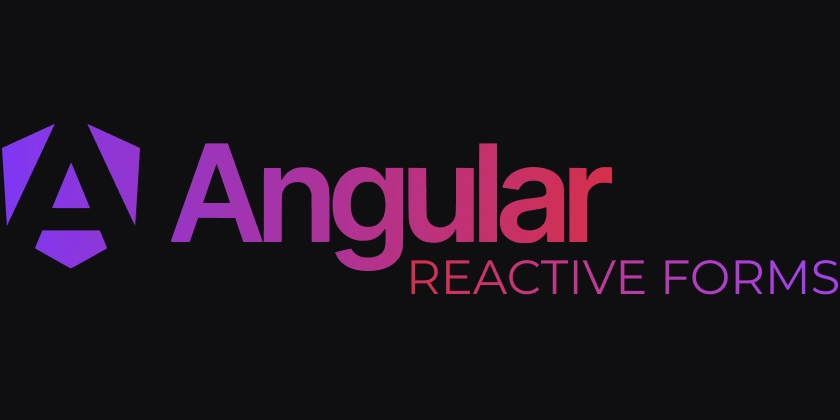Managing Complex Forms with Angular Reactive Forms
Angular Reactive Forms provide a robust, scalable way to handle complex forms in your applications. They offer dynamic form creation, powerful validation, and easier testability compared to template-driven forms. Why Use Reactive Forms? Predictable and immutable state management Dynamic form controls and validations Enhanced testability and maintainability Setting Up Reactive Forms Step 1: Import ReactiveFormsModule Include ReactiveFormsModule in your app module: import { ReactiveFormsModule } from '@angular/forms'; @NgModule({ imports: [ ReactiveFormsModule ] }) export class AppModule {} Step 2: Create a Reactive Form Define a reactive form using FormGroup and FormControl: import { FormGroup, FormControl, Validators } from '@angular/forms'; export class ExampleComponent { myForm = new FormGroup({ username: new FormControl('', [Validators.required, Validators.minLength(4)]), email: new FormControl('', [Validators.required, Validators.email]), }); } Step 3: Bind Form to Template Connect your reactive form to the template: Submit Advanced Reactive Form Techniques Dynamic Form Controls Dynamically add/remove form controls: addControl() { this.myForm.addControl('address', new FormControl('', Validators.required)); } removeControl() { this.myForm.removeControl('address'); } Nested FormGroups Handle nested form data: myForm = new FormGroup({ userDetails: new FormGroup({ username: new FormControl('', Validators.required), email: new FormControl('', [Validators.required, Validators.email]) }), terms: new FormControl(false, Validators.requiredTrue) }); Template usage: Agree to terms FormArrays Manage collections of form controls: skills = new FormArray([]); addSkill(skill: string) { this.skills.push(new FormControl(skill, Validators.required)); } removeSkill(index: number) { this.skills.removeAt(index); } Template example: Remove Add Skill Validation and Error Handling Display validation messages clearly: Username is required (min 4 characters). Best Practices Keep forms modular and reusable. Use meaningful validators for clear feedback. Encapsulate complex form logic within components or dedicated services. Always manage form state clearly and predictably. Conclusion Reactive Forms in Angular simplify managing complex forms, offering control, dynamic behavior, and powerful validation capabilities. Following these best practices helps create maintainable and robust form-driven applications. What’s your preferred approach to managing forms in Angular? Share your experiences and insights below!

Angular Reactive Forms provide a robust, scalable way to handle complex forms in your applications. They offer dynamic form creation, powerful validation, and easier testability compared to template-driven forms.
Why Use Reactive Forms?
- Predictable and immutable state management
- Dynamic form controls and validations
- Enhanced testability and maintainability
Setting Up Reactive Forms
Step 1: Import ReactiveFormsModule
Include ReactiveFormsModule in your app module:
import { ReactiveFormsModule } from '@angular/forms';
@NgModule({
imports: [
ReactiveFormsModule
]
})
export class AppModule {}
Step 2: Create a Reactive Form
Define a reactive form using FormGroup and FormControl:
import { FormGroup, FormControl, Validators } from '@angular/forms';
export class ExampleComponent {
myForm = new FormGroup({
username: new FormControl('', [Validators.required, Validators.minLength(4)]),
email: new FormControl('', [Validators.required, Validators.email]),
});
}
Step 3: Bind Form to Template
Connect your reactive form to the template:
[formGroup]="myForm" (ngSubmit)="submitForm()">
formControlName="username" placeholder="Username" />
formControlName="email" placeholder="Email" />
type="submit">Submit
Advanced Reactive Form Techniques
Dynamic Form Controls
Dynamically add/remove form controls:
addControl() {
this.myForm.addControl('address', new FormControl('', Validators.required));
}
removeControl() {
this.myForm.removeControl('address');
}
Nested FormGroups
Handle nested form data:
myForm = new FormGroup({
userDetails: new FormGroup({
username: new FormControl('', Validators.required),
email: new FormControl('', [Validators.required, Validators.email])
}),
terms: new FormControl(false, Validators.requiredTrue)
});
Template usage:
formGroupName="userDetails">
formControlName="username" />
formControlName="email" />
FormArrays
Manage collections of form controls:
skills = new FormArray([]);
addSkill(skill: string) {
this.skills.push(new FormControl(skill, Validators.required));
}
removeSkill(index: number) {
this.skills.removeAt(index);
}
Template example:
formArrayName="skills">
*ngFor="let skill of skills.controls; let i=index">
[formControlName]="i" />
(click)="removeSkill(i)">Remove









































































































































































![[The AI Show Episode 144]: ChatGPT’s New Memory, Shopify CEO’s Leaked “AI First” Memo, Google Cloud Next Releases, o3 and o4-mini Coming Soon & Llama 4’s Rocky Launch](https://www.marketingaiinstitute.com/hubfs/ep%20144%20cover.png)



































































































































![From fast food worker to cybersecurity engineer with Tae'lur Alexis [Podcast #169]](https://cdn.hashnode.com/res/hashnode/image/upload/v1745242807605/8a6cf71c-144f-4c91-9532-62d7c92c0f65.png?#)























![BPMN-procesmodellering [closed]](https://i.sstatic.net/l7l8q49F.png)



















































































.jpg?#)
.jpg?#)
.jpg?#)

































































































































![CarPlay app with web browser for streaming video hits App Store [U]](https://i0.wp.com/9to5mac.com/wp-content/uploads/sites/6/2024/11/carplay-apple.jpeg?resize=1200%2C628&quality=82&strip=all&ssl=1)
![What’s new in Android’s April 2025 Google System Updates [U: 4/21]](https://i0.wp.com/9to5google.com/wp-content/uploads/sites/4/2025/01/google-play-services-3.jpg?resize=1200%2C628&quality=82&strip=all&ssl=1)













![Apple Releases iOS 18.5 Beta 3 and iPadOS 18.5 Beta 3 [Download]](https://www.iclarified.com/images/news/97076/97076/97076-640.jpg)
![Apple Seeds visionOS 2.5 Beta 3 to Developers [Download]](https://www.iclarified.com/images/news/97077/97077/97077-640.jpg)
![Apple Seeds tvOS 18.5 Beta 3 to Developers [Download]](https://www.iclarified.com/images/news/97078/97078/97078-640.jpg)
![Apple Seeds watchOS 11.5 Beta 3 to Developers [Download]](https://www.iclarified.com/images/news/97079/97079/97079-640.jpg)
































































































































